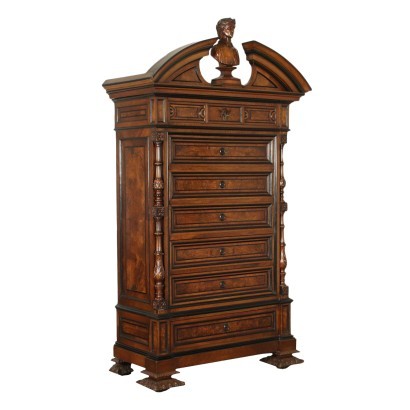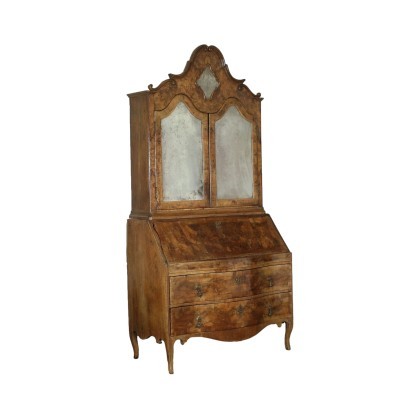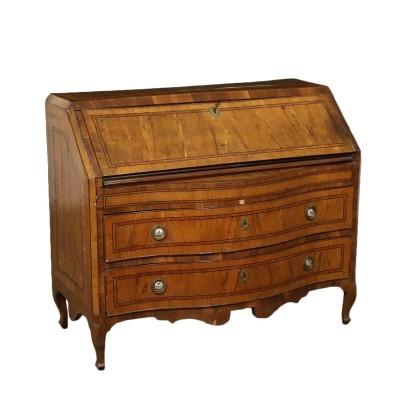Umbertino Secretaire With Dante Alighieri Bust Walnut Ebony Italy 1800
Features
Style: Umbertino (1870-1900)
Age: 19th Century / 1801 - 1900
Origin: Italy
Main essence: Maple , Ebony , Walnut
Description
Umbertino secretaire supported by carved feet, like the uprights that frame the front where, starting from the bottom, there are three drawers, the last one presents a writing desk and many compartments, one of which with an inkwell. The three upper drawers hide a flap door, which conceals an architectural cabinet, that emulates the front of a building, with columns and two niches with bronze sculptures that frame a central door, above which there is the inscription "INDULGENT PLENR QUOTI PERPET "; there are numerous secrets. In the upper part, there is another drawer whose keyhole is carved as a grotesque mask; the broken tympanum that crowns the cabinet has a carved bust of Dante Alighieri in the middle. Walnut, burr walnut veneer with ebony framing, the interiors of the compartment are maple.
Product Condition:
Fair condition. Wear consistent with age and use. Any damage or loss is displayed as completely as possible in the pictures. Product with a Certificate of Authenticity and Lawful Origin.
Dimensions (cm):
Height: 222
Width: 120
Depth: 58,5
Additional Information
Style: Umbertino (1870-1900)
The name of this style is due to the ruler of the time Umberto I appointed King of the Kingdom of Italy on January 9, 1878 and assassinated on July 9, 1900.The Umbertino style is typically Italian and belongs to that Eclectic period that characterized the second half of the 19th century, which lasted just under twenty years. The Umbertino style spread around 1880 and ended around 1895 when a new style called Liberty and universally known as Art-Nouveau took over, followed by Art-Decò.
In this style, predominantly eclectic and monumental, Gothic and Baroque elements originally belonging to the Renaissance but also adorned with large masks, frames and decorations were re-proposed in furniture, from the bedside table to the large wardrobe or sideboard.
Find out more about the Umbertino style with our insights:
An Umbertine secretaire dedicated to Dante Alighieri
A comparison between a Louis Philippe console and an Umbertina
INSERT ADDITIONAL LINKS:
The Austrian taste of Baroque
A guide to Art Nouveau
Discovering Art Deco





























































